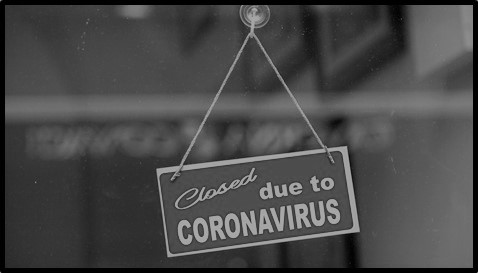PREET SANGHVI.
marketing consultant, hospitality and gastronomy, Gourmet Tales. MUMBAI
dine-out or dine-in ? re-imagining the restaurant industry in India 2020.
Just when the world was getting closer via food, and the gastronomy world ventured into a new wave of experiences, events and conventions, life took a twist with the coronavirus pandemic and we entered a new wave of ‘social distancing’.
Like any other country, restaurants are the heart of Indian communities.
Because of this, hospitality and restaurant industry in India has experienced rapid growth in the past few years, contributing to 10% of the overall GDP.
Different cuisines, events and produce from all over the world is welcomed in this country of 1.4 billion people, making it an attractive culinary hub.
In the global lockdown following the Corona virus crisis, the hospitality industry was hardest hit:10% of restaurants have shut down permanently, and another 30% are unlikely to reopen.
Having worked as a restaurant marketing consultant myself, when I initially talked to restaurateurs they seemed really confident about getting through this crisis within a short period of time.
But a couple of months ago, it became clear that restaurants weren’t going to open anytime soon, and watching other countries handling this pandemic much better than India, everyone’s mood collapsed. The fall in the industry is largely driven by many markets being in lockdown, consumers not stepping out due to fear of transmission, and restaurants not opening up, even if the city is not in lockdown.
Restaurants thrive on social gatherings, and since the only way to flatten the curve is social distancing, the situation brought the F&B industry to its knees.
We as consumers are social animals, and people will always eat and drink.
From that perspective it is likely, the hospitality industry will return to an inclined landscape. when the Corona virus crisis ends.
However, in the current scenario, with no relief on rents, accruing staff salaries, overhead expenses and no or minimal inflow of food sales we would need to see- how eateries – from affordable fast food chains to high end restaurants- will manage to rapidly adjust strategies without jeopardizing their future.
Chefs and restaurant owners are now having to figure out what their businesses would look like in a socially distanced world.
One transformation in India is the rise of home chefs and bakers, delivery and cloud kitchens, small private catering, personalized curated food boxes by restaurants corresponding to a plunge in home cooking and local food supply chain.
With restrictions on international travel and tourism, the government is also promoting state tourism and local supply chain.
People have always been willing to spend much more on food and produce when they are in other countries, and now with the restrictions on outsourced food and supply chain, there is a rise in demand for local food and produce.
It seems people will be finally inclined to value their own food and ingredients and be willing to pay a fair price for it, thus strengthening our own food culture.
In any case, it appears the dining out industry in India is yet to bounce back and is operating at 8-10 percent of pre-Covid levels.
Industry’s leaders anticipate that when the storm passes, the hospitality domain will see a bolt of transformation, creativity and new normal lasting change in consumer behavior. Hence, the Indian hospitality industry should take steps in the direction of creating safe spaces for the consumers.
What would we as consumers want before we make a decision to dine in?
An average Indian consumer eats at least 2-3 meals outside every week.
I fathom that there will be fewer restaurants—or fewer of the kinds of restaurants we love to go to and cherish. I do see smaller menus, more focus on quality ingredients, increase in outdoor dining, renewed attention to customer loyalty together with the option of scrolling through `a wider portal of multichannel offerings as the baseline to be part of the market.
Having said that, people will always want to meet each other and celebrate.
Restaurants are the last walls of hope for offline social human engagement. Everything can go virtual in this world but restaurants and bars can never go truly virtual.
When we bid a farewell to this pandemic—and it’s a matter of time before we do—it’ll be heart-warming to seeing families, friends, couples, and colleagues reconnect in profound ways over scrumptious meals.
That’s the power of food, no matter which culture or country you belong to- it unites people and trust me when I say this- the love of food can spread faster than this virus!
